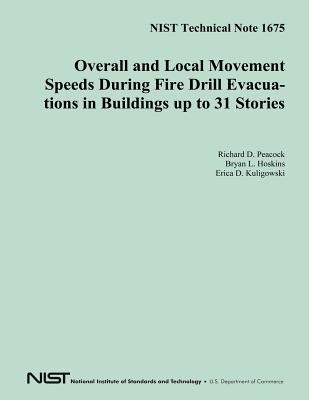
- We will send in 10–14 business days.
- Author: U S Department of Commerce
- Publisher: CreateSpace Independent Publishing Platform
- Year: 2014
- Pages: 34
- ISBN-10: 1496010302
- ISBN-13: 9781496010308
- Format: 21.6 x 28 x 0.2 cm, softcover
- Language: English
- SAVE -10% with code: EXTRA
NIST Technical Note 1675 Overall and Local Movement Speeds During Fire Drill Evacuations in Buildings up to 31 Stories (e-book) (used book) | bookbook.eu
Reviews
Description
The time that it takes an occupant population to reach safety when descending a stairwell during building evacuations is typically described by measureable engineering variables such as stairwell geometry, speed, density, and pre-evacuation delay. In turn, engineering models of building evacuation use these variables to predict the performance of egress systems for building design, emergency planning, or event reconstruction. As part of a program to better understand occupant movement and behavior during building emergencies, the Building and Fire Research Laboratory at the National Institute of Standards and Technology (NIST) has been collecting stairwell movement data during fire drill evacuations of office buildings. These data collections are intended to provide a better understanding of this principal building egress feature and develop a technical foundation for future codes and standards requirements. To date, NIST has collected fire drill evacuation data in eight office building occupancies ranging from six to 62 stories in height that have included a range of stairwell widths and occupant densities.
EXTRA 10 % discount with code: EXTRA
The promotion ends in 19d.20:18:35
The discount code is valid when purchasing from 10 €. Discounts do not stack.
- Author: U S Department of Commerce
- Publisher: CreateSpace Independent Publishing Platform
- Year: 2014
- Pages: 34
- ISBN-10: 1496010302
- ISBN-13: 9781496010308
- Format: 21.6 x 28 x 0.2 cm, softcover
- Language: English English
The time that it takes an occupant population to reach safety when descending a stairwell during building evacuations is typically described by measureable engineering variables such as stairwell geometry, speed, density, and pre-evacuation delay. In turn, engineering models of building evacuation use these variables to predict the performance of egress systems for building design, emergency planning, or event reconstruction. As part of a program to better understand occupant movement and behavior during building emergencies, the Building and Fire Research Laboratory at the National Institute of Standards and Technology (NIST) has been collecting stairwell movement data during fire drill evacuations of office buildings. These data collections are intended to provide a better understanding of this principal building egress feature and develop a technical foundation for future codes and standards requirements. To date, NIST has collected fire drill evacuation data in eight office building occupancies ranging from six to 62 stories in height that have included a range of stairwell widths and occupant densities.


Reviews